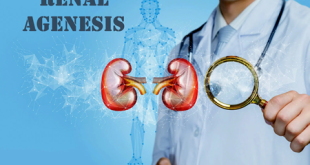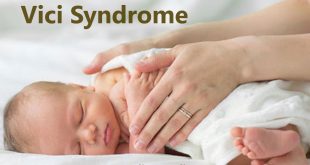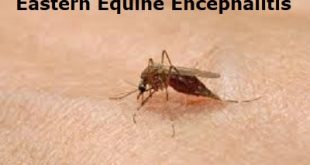Overview – Ehlers Danlos Syndrome
Ehlers Danlos syndrome (EDS) is a disease that weakens the connective tissues of your body. These are things like tendons and ligaments that hold parts of your body together. EDS can make your joints loose and your skin thin and easily bruised. It also can weaken blood vessels and organs.
It is an inherited condition that affects the connective tissues in the body. Connective tissue is responsible for supporting and structuring the skin, blood vessels, bones, and organs. It’s made up of cells, fibrous material, and a protein called collagen. A group of genetic disorders causes Ehlers-Danlos syndrome, which results in a defect in collagen production.
Types of Ehlers Danlos Syndrome
There are several types of EDS. They can range from mild to life-threatening. Recently, 13 major types of Ehlers-Danlos syndrome have been subtyped. These include:
- Classic
- Classic-like
- Cardiac-valvular
- Vascular
- Hypermobile
- Arthrochalasia
- Dermatosparaxis
- Kyphoscoliotic
- Brittle cornea
- Spondylodysplastic
- Musculocontractural
- Myopathic
- Periodontal
Pathophysiology of EDS
Ehlers-Danlos syndrome (EDS) is a heterogeneous group of inherited connective tissue disorders characterized by joint hypermobility, cutaneous fragility, and hyperextensibility. The collagen defect has been identified in at least six of the many types of Ehlers-Danlos syndrome. The vascular form sometimes referred to as type IV, is characterized by a decreased amount of type III collagen. It is autosomal dominant and caused by mutations in the COL3A1 gene that result in increased fragility of connective tissue with arterial, intestinal, and uterine ruptures and premature death. Types V and VI are characterized by deficiencies in hydroxylase and lysyl oxidase, an important posttranslational modifying enzyme in collagen biosynthesis. Type VII has an amino-terminal procollagen peptidase deficiency. Type IX has abnormal copper metabolism. Type X has nonfunctioning plasma fibronectin.
In Ehlers-Danlos syndrome types I and II, the classic variety, identifying the molecular structure in most individuals who are affected is difficult. Causative mutations may involve the COL5A1, COL5A2, and tenascin-X genes and are implied to be in the COL1A2 gene. Nonetheless, in most families with autosomal dominant Ehlers-Danlos syndrome, the disease appears to be linked to loci that contain the COL5A1 or COL5A2 genes. Although half of the mutations that cause Ehlers-Danlos syndrome types I and II are likely to affect the COL5A1 gene, a significant portion of the mutations result in low levels of mRNA from the mutant allele as a consequence of nonsense-mediated mRNA decay.
What causes Ehlers Danlos Syndrome?
Ehlers-Danlos syndromes (EDS) are genetic disorders that can be caused by mutations in several different genes, including COL5A1, COL5A2, COL1A1, COL3A1, TNXB, PLOD1, COL1A2, FKBP14, and ADAMTS2. However, the underlying genetic cause is unknown in some families.
Mutations in these genes usually change the structure, production, and/or processing of collagen, or proteins that interact with collagen. Collagen provides structure and strength to connective tissues throughout the body. A defect in collagen can weaken connective tissues in the skin, bones, blood vessels, and organs, resulting in the signs and symptoms of EDS.
How EDS is inherited?
The two main ways Ehlers-Danlos syndrome is inherited are:
- Autosomal dominant inheritance (hypermobile, classical and vascular Ehlers-Danlos syndrome) – the faulty gene that causes Ehlers-Danlos syndrome is passed on by one parent and there’s a 50% risk of each of their children developing the condition
- Autosomal recessive inheritance (kyphoscoliotic Ehlers-Danlos syndrome) – the faulty gene is inherited from both parents and there’s a 25% risk of each of their children developing the condition
A person with Ehlers-Danlos syndrome can only pass on the same type of Ehlers-Danlos syndrome to their children. For example, the children of someone with hypermobile Ehlers-Danlos syndrome can’t inherit vascular Ehlers-Danlos syndrome.
Signs, Symptoms, and Complications of EDS
Classical (cEDS)
cEDS (formerly EDSI and EDSII) is associated with the primary problems described above, skin hyperextensibility, joint laxity, and fragile blood vessels. Scars are very thin, discolored, and stretch with time. Such paper-like (papyraceous) scarring occurs especially over prominent bony pressure points such as the knees, elbows, shins and forehead.
Classical-like (clEDS)
clEDS is similar in clinical course to cEDS. Genetic causes of cEDS and clEDS differ.
Cardiac-valvular type (cvEDS)
cvEDS is a rare subtype of EDS wherein patients may have minor signs of EDS with severe defects to their aorta, requiring surgical interventions.
Vascular type (vEDS)
vEDS (formerly EDSIV), can be identified at birth with noticeable clubfoot deformities and dislocation of the hips. In childhood, inguinal hernia (partial slip of intestine beyond the abdominal wall) and pneumothorax (collection of air between the lung and chest wall, impairing proper lung inflation) are commonly experienced and are indicative of this syndrome.
Hypermobility type (hEDS)
hEDS (formerly EDSIII) comes with a defined set of complications to be managed but is generally a less severe form of the syndrome. For example, aortic root dilation is usually minimal and does not significantly increase the risk for dissections. The major complications to patients with hEDS are musculoskeletal in nature. Frequent joint dislocation and degenerative joint disease are common and associated with a baseline chronic pain, which affects both physical and psychological well being.
Arthrochalasia type (aEDS)
aEDS (formerly EDSVII, A and B) is associated with the lifelong risk for the dislocation of multiple major joints concurrently. This condition makes achieving mobility significantly challenging.
Dermatosparaxis type (dEDS)
Patient with dEDS (formerly EDSVIIC) tends to show a set of common body features. These include short stature and finger length, loose skin of the face, with comparatively full eyelids, blue-tinged whites of the eye (sclera), skin folds in the upper eyelids (epicanthal folds), downward slanting outer corners of the eyes (palpebral fissures) and a small jaw (micrognathia). A major complication of dEDS is herniation, the improper displacement of an organ through the tissues holding it in a proper position.
Kyphoscoliotic type (kEDS)
kEDS is accompanied by scleral fragility, increasing the risk for rupture of the white globe of the eye. Microcornea, near-sightedness (myopia), glaucoma and detachment of the nerve-rich membrane in the back of the eye (retina) are common and can result in vision loss. Patients experiencing floaters, flashes or sudden curtains falling across their visual field should seek immediate medical attention.
Brittle cornea syndrome (BCS)
BCS is a variant of EDS that also involves the eyes. People with variant risk ruptures to the cornea following minor injuries with scarring, degeneration of the cornea (keratoconus), and protrusion of the cornea (keratoglobus). Patients may have blue sclera.
Spondylodysplastic type (spEDS)
spEDS, previously spondylocheirodysplastic type, describes an EDS variant with skeletal dysmorphology. It primarily involves the spine and the hands. Clinical presentation can include stunted growth, short stature, protuberant eyes with bluish sclera, wrinkled skin of the palms, atrophy of muscles at the base of the thumb (thenar muscles), and tapering fingers.
Musculocontractural type (mcEDS)
mcEDS is characterized by progressive multisystem complications. This subtype is especially associated with developmental delay and muscular weakness plus hypotonia. Patients often have facial and cranial structural defects, congenital contractures of the fingers, severe kyphoscoliosis, muscular hypotonia, club foot deformity, and ocular problems.
Myopathic type (mEDS)
mEDS is characterized by muscle hypotonia evident at birth with muscles that do not function properly (myopathy). Scoliosis and sensorineural hearing impairment may accompany this condition.
Periodontal type (pEDS)
pEDS type (formerly EDS VII) has findings that include disease of the tissues surrounding and supporting the teeth (periodontal disease), potentially resulting in premature tooth loss.
Diagnosis and Test for Ehlers Danlos Syndrome
A diagnosis of the Ehlers-Danlos syndromes (EDS) is typically based on the presence of characteristic signs and symptoms. Depending on the subtype suspected, some of the following tests may be ordered to support the diagnosis:
- Collagen typing, performed on a skin biopsy, may aid in the diagnosis of vascular type, arthrochalasia type, and dermatosparaxis type. People with EDS often have abnormalities of certain types of collagen.
- Genetic testing is available for many subtypes of EDS; however, it is not an option for most families with the hypermobility type.
- Imaging studies such as CT scan, MRI, ultrasound, and angiography may be useful in identifying certain features of the condition.
- Urine tests to detect deficiencies in certain enzymes that are important for collagen formation may be helpful in diagnosing the kyphoscoliosis type.
Is there any treatment for Ehlers Danlos Syndrome?
There is no cure for Ehlers-Danlos syndrome, but treatment can help you manage your symptoms and prevent further complications.
Medications
Your doctor may prescribe drugs to help you control:
Pain. Over-the-counter pain relievers — such as acetaminophen (Tylenol, others) ibuprofen (Advil, Motrin IB, others) and naproxen sodium (Aleve) — are the mainstay of treatment. Stronger medications are only prescribed for acute injuries.
Blood pressure. Because blood vessels are more fragile in some types of Ehlers-Danlos syndrome, your doctor may want to reduce the stress on the vessels by keeping your blood pressure low.
Physical therapy
Joints with weak connective tissue are more likely to dislocate. Exercises to strengthen the muscles and stabilize joints are the primary treatment for Ehlers-Danlos syndrome. Your physical therapist might also recommend specific braces to help prevent joint dislocations.
Surgical and other procedures
Surgery may be recommended to repair joints damaged by repeated dislocations. However, your skin and the connective tissue of the affected joint may not heal properly after the surgery.
Surgery may be necessary to repair ruptured blood vessels or organs in people with Ehlers-Danlos syndrome, vascular type.
Precautions & Prevention of Ehlers-Danlos Syndrome
Genetic counseling can help you understand the inheritance pattern of the type of EDS that affects you and the risks it poses for your children.
Here are a few guidelines you can do to reduce your risk:
- Avoid contact sports, weightlifting, and other activities
- Use protective gear
- Use mild soaps and sunscreen
- Use assistive devices to help decrease stress on your joints
 Diseases Treatments Dictionary This is complete solution to read all diseases treatments Which covers Prevention, Causes, Symptoms, Medical Terms, Drugs, Prescription, Natural Remedies with cures and Treatments. Most of the common diseases were listed in names, split with categories.
Diseases Treatments Dictionary This is complete solution to read all diseases treatments Which covers Prevention, Causes, Symptoms, Medical Terms, Drugs, Prescription, Natural Remedies with cures and Treatments. Most of the common diseases were listed in names, split with categories.








wish drug can cure it.
There is no cure for Ehlers-Danlos syndrome, but treatment can help you manage your symptoms and prevent further complications.
what is mean by contact sports?
a sport in which the participants necessarily come into bodily contact with one another.